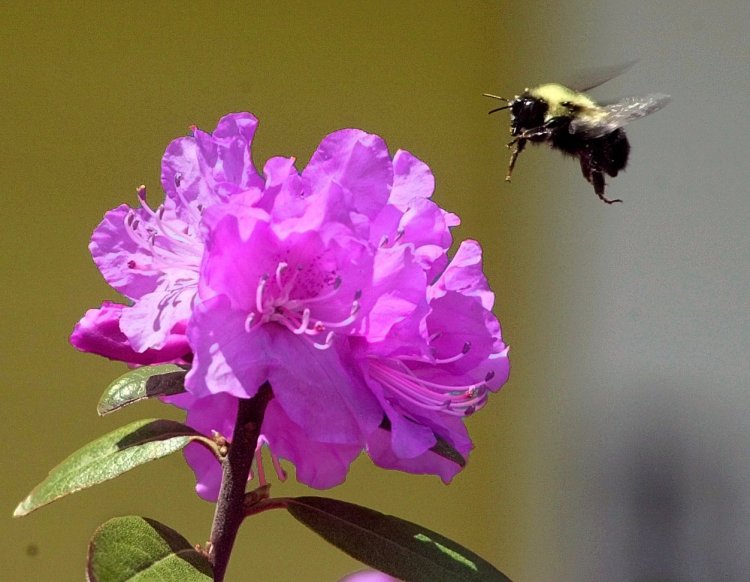Judging from the emails I received about my last column, on mimic thrushes, a lot of people share my enthusiasm for Northern mockingbirds. A Northern mockingbird on the Colby College campus helps my friend Ron Joseph with his workouts. He likes to walk laps on the track surrounding the football field. A male mockingbird keeps him amused with an amazing song repertoire. He has heard the following mimicked songs and calls: red-shouldered hawk, killdeer, American kestrel, great crested flycatcher, Eastern phoebe, blue jay, black-capped chickadee, tufted titmouse, Carolina wren, American robin, wood thrush, European starling, field sparrow, scarlet tanager (chick-burr notes) and several other songs that are more difficult to identify. That is a virtuoso!
In today’s column, we will venture into another group of flying animals, the bumblebees. These insects are important plant pollinators. Their life cycle is a fascinating one.
We are currently at a major event in the bumblebee year. I’ll bet you saw some large bumblebees in May, continuing into this month. These bumblebees were few and far between. Now, we are starting to see smaller bumblebees appearing. In a few weeks, even smaller bumblebees will appear.
So, what is going on with these different-sized bumblebees? No, we are not dealing with the emergence of different species of different sizes. Within a species, we see three distinct size-classes of bumblebees.
Like many other members of the insect Order Hymenoptera (bees, wasps, ants), bumblebees are colonial. A large group of related individuals live and work together to maintain the colony.
Note that bird colonies are quite different. A bird colony consists of many cliff swallows, Atlantic puffins, penguins or, once, passenger pigeons nesting in a restricted area. Every individual is engaged in reproduction and most are not closely related to each other. In insects, very few members of a colony reproduce but are all related. The others support the reproductive individuals, forgoing their own reproduction but getting some of their genes into the next generation by helping to raise sisters or brothers.
To understand a bumblebee colony, let’s start in the winter. The only member of a bumblebee colony that will survive the winter is the queen. She mated in the fall before entering hibernation so she is ready to lay fertile eggs in the spring.
Time is of the essence for the queen as she must find a cavity to begin a new colony. A bumblebee queen does not dig her own nest cavity but rather uses an old rodent burrow, an opening at the base of a tussock of grass and even a human-made cavity.
After emergence, the queen — she’s the large bumblebee you may have observed in May — gathers pollen and nectar from the few flowering plants that are available. Within her cavity, she first constructs a wax-cup and then lines it with the pollen and nectar she has been collecting. Then, she lays eggs. Once the larvae hatch from the eggs, they gobble up the pollen that their thoughtful mother set aside for them. Within a couple of weeks, the larvae pupate and then emerge as workers, non-reproductive females. We are just starting to see the workers, which are medium-sized, now.
The workers defend the colony and collect the pollen and nectar for the larvae. Released from her pollen-collecting duties, the queen can become an egg-laying machine. Workers roll off the assembly line.
In late summer, the queen lays fertilized eggs that will give rise to new queens. Some of her eggs are not fertilized and they develop into males. Males are usually smaller than the workers. The males’ job is to fertilize the newly born queens so they can overwinter and be ready to go the next spring to start a new colony. The old queen, the workers and the males will not survive the winter.
We have only 17 species of bumblebees in the state, so getting a handle on them is not daunting. You can find a great resource for their identification online: https://www.fs.fed.us/wildflowers/pollinators/documents/BumbleBeeGuideEast2011.pdf
Herb Wilson taught ornithology and other biology courses at Colby College. He welcomes reader comments and questions at whwilson@colby.edu.
Send questions/comments to the editors.



Comments are no longer available on this story